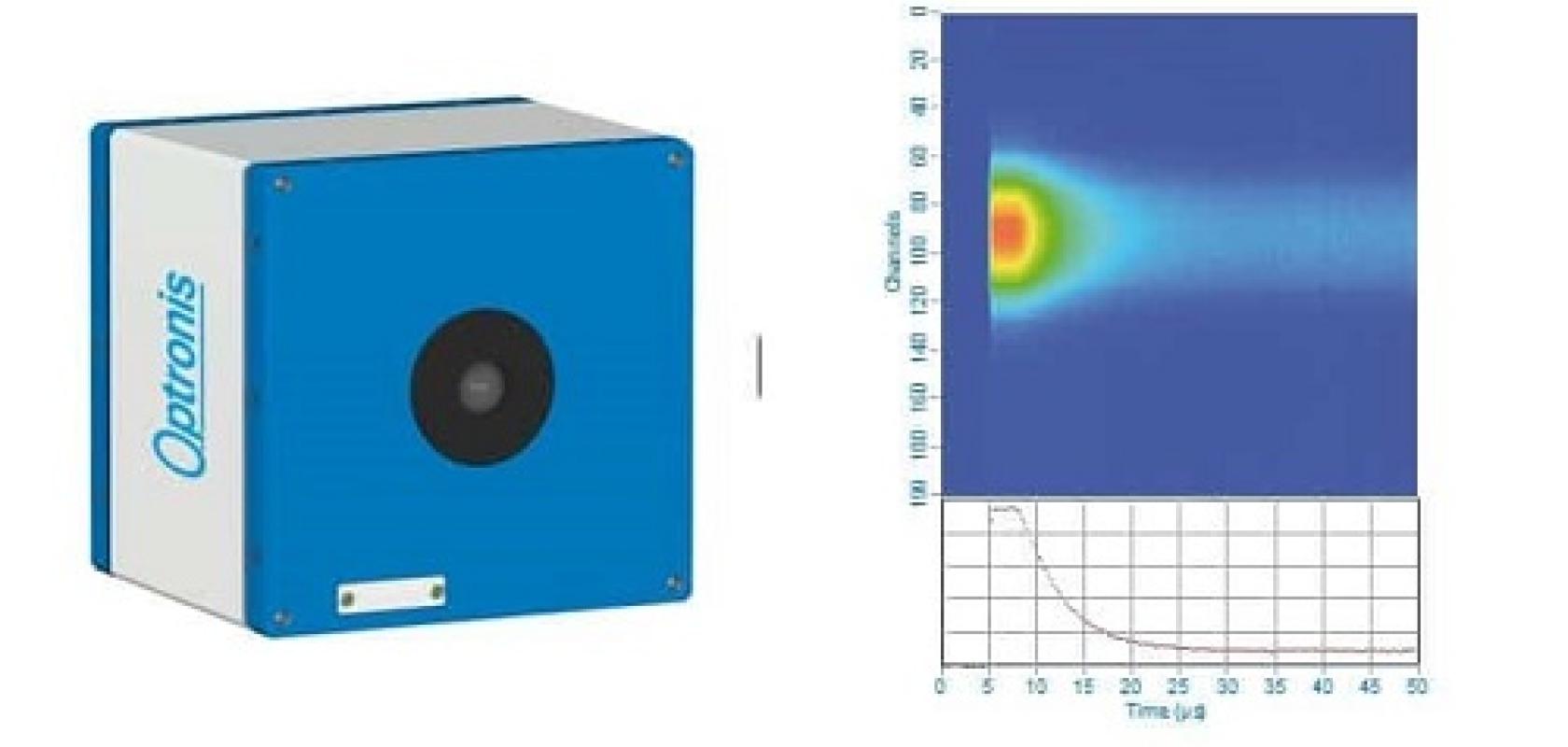Optronis will show a streak camera based on a semiconductor sensor at Laser World of Photonics in April, which it claims is a world-first.
The company says the semiconductor-based S3C-1 model – standing for solid-state streak camera (S3C) – will open up new applications in the fields of plasma research, detonics and microfluidics.
Streak cameras measure optical phenomena in the range of pico- or even femtoseconds. Conventional streak cameras are based on vacuum tubes; by comparison, the S3C-1 model is more compact, more robust and less expensive than cameras using vacuum tubes.
The S3C-1 records data at about one terabyte per second. It scans the optical signal along a line with a temporal resolution in the nanosecond range.
The camera captures 200 channels simultaneously and stores 200 temporal values each. Sampling intervals from 500ps to 50μs are available, and time windows from 100ns to 10ms are adjustable. The temporal resolution is close to 1ns.
Triggering signal does not need to be applied before the event as with conventional streak cameras, but can also take place afterwards. Optronis says that this is the first time that post-triggering for streak cameras is possible.
Optronis CEO, Dr Patrick Summ, said: ‘Optronis wants to use current semiconductor technology to be able to cover applications with this streak camera that could not be economically served with conventional streak cameras. This camera brings innovation to anyone involved in the study of fast physical phenomena. Our goal is to be able to offer this global innovation at an attractive cost.’
The camera measures 12 x 12 x 10cm and weighs 2kg. It will be presented at SPIE Photonics Europe in Strasbourg from the 3 to 7 April, and at Laser World of Photonics in Munich from 26 to 29 April.


